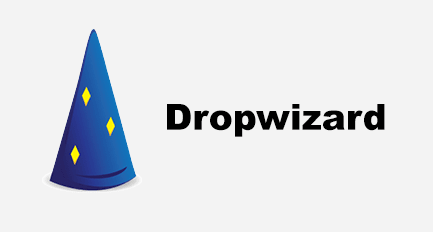The Java programming language is a high-level, object-oriented language that enables developers to create robust, reusable code. Java is known for its portability and platform independence, which means that Java code can run on any system that supports the Java Runtime Environment (JRE).
Java was originally developed by James Gosling at Sun Microsystems in 1995. Since then, the language has undergone several changes and has become one of the most widely used programming languages in the world. According to estimation, there are more than 9 million developers worldwide using Java for a variety of purposes.
Java is a versatile and powerful programming language like Node js. It is widely used in a variety of application domains, including mobile applications, enterprise software development, web application development, and more. In recent years, the popularity of Java has grown significantly, making it one of the most popular programming languages for developing server-side applications.
There are many reasons why java is so popular among developers. Some of the most notable reasons include:
- Java is easy to learn and use
- Java is versatile and can be used for a wide range of tasks
- Java code is portable and can run on any platform that supports the JRE
- Java is well-suited for the development of enterprise-scale applications and meets the spring security standards.
What Are RESTful Web Services in Java?
There are many different ways to define a RESTful web service in Java. In its most basic form, a RESTful web service is simply a web service that uses the Representational State Transfer (REST) architectural style. This means that the web service can be accessed via an HTTP request protocol and supports CRUD (Create, Read, Update, Delete) operations. A more specific definition of a RESTful web service in Java would be a web service that:
- Is built on the JAX-RS API (Java API for XML Web Services)
- Uses the @path annotation to map URLs to resources
- Supports CRUD operations via the @GET, @post, @PUT, and @DELETE annotations
- Is deployed to a Java EE-compliant application server, such as WildFly or Tomcat
How to Pick an API Framework
There are many different Java API frameworks to choose from. So, how do you know which one is right for your project? Here are some things to keep in mind as a developer when choosing an API framework:
Make sure the framework is compatible with the versions of Java and other software your Java app requires like the data structure you are using.
Consider the size and complexity of your web application. Some frameworks are better suited for small projects, while others are more robust and can handle large, complex java applications.
Consider the type of API you need to create. Some frameworks focus on REST APIs, while others support SOAP or other API types.
Look at the API documentation, testing framework, and resources available for the framework to see if they meet your needs. Does the framework have good documentation? Are there plenty of resources available online (such as tutorials, articles, etc.)?
Ask other Java programmers what frameworks they recommend and can advise on other topics such as the java virtual machine.
Taking the above into consideration, let’s look at some of the most popular Java Frameworks for creating RESTful APIs.
The Frameworks
Spring Framework (Spring MVC)
Spring MVC is the black sheep of the REST Frameworks, as it doesn’t implement the JAX-RS specification. However, at its roots, Spring has always been a framework that supports REST API, If you’re familiar with Spring’s Enterprise Java Application development, then you know how easy it is to replace the REST API with another compliant framework. In Spring, you use REST annotations to specify the different methods for interacting with your REST service. You place the @RestController annotation on a class so you can map it to any resources and commands.
Pros:
- Declarative support for caching, validation, transaction, and formatting.
- Dependency injection is an excellent way to test frameworks. Spring isn’t required to be used in a serverless environment, while EJB and Struts applications require a server.
- Dependent components can be injected without any knowledge of where they came from, making it easy for the system to be flexible and extensible.
Cons:
- To develop a Spring application, you need lots of XML.
- Developers must spend a lot of time trying to figure out which features to use and which ones not to use.
- Developers take for granted the importance of XSS and cross-site scripting. With this in mind, we need to figure out how to stop hackers from infiltrating your application independently.
To learn more about Spring MVC framework, you can check out the docs Here
Play Framework
Play Framework is a refreshingly unconventional and unique type of framework that uses RESTful architecture by default. It follows the convention over the configuration approach, which means Play is very easy to customize for your needs. Play is built on the MVC pattern and isn’t limited to Java and Scala. It’s similar to other frameworks like Django, Ruby on Rails, or ASP.NET MVC because it doesn’t follow J2EE web standards. It’s a high-performance java framework so errors are caught before you hit production with static typing and reactive processing principles. With Play2, you can integrate easily with Maven projects and generate simple JAR files.
Pros:
- Intuitive java server face
- API Test and Unit Testing Application is easy
- Fast development
Cons:
- Unstable Plug-ins
- Does not offer backward compatibility
- Architecture is hard to understand
To learn more about Play framework, you can check out the docs Here
Blade
Blade is an elegant and lightweight MVC framework that allows Java programmers to build fast web applications. Blade follows the RESTful style routing interface, allowing users to understand the whole framework in just a day. It has a low footprint with less than 500kb of total code and be accessed using Java 8. Blade also contains built-in security features such as CSRF(Cross-Site Request Forgery) and XSS Cross-Site Scripting).
Pros:
- Access the RESTful routing interface and deploy your application
- Flexible framework, supporting plugin extensions
- High-performance and lightweight
Cons:
- Lack of Documentation
- Optimization of code required
- Social applications are generic and lack personality
To learn more about Blade framework, you can check out the docs Here
Grails
Grails is a web framework written in the Groovy programming language that runs on Java. Grails is based on the Model-View-Controller design pattern and is compatible with Java syntax, though it has some additional features not found in Java. Grails is designed to be easy to learn if you know Java or another object-oriented language. Like JSP, GSP (Groovy Server Pages) is used to render data in Grails and it’s simple to create tags for the View. Grails also provide built-in support for RESTful APIs, making it easy to create such services, and you can use Hibernate instead of GORM as an ORM implementation.
Pros:
- The dynamic configuration feature allows you to configure changes without restarting the server. This is especially helpful when you have to make frequent adjustments.
- Because there are fewer CSS framework plugins, it’s easier to configure the CSS.
- Extensive Documentation
Cons:
- If you’re involved in a multi-threaded application, GORM might not work as well for you.
- Java Developer primarily declares variables with “def” which is equivalent to “object.” This can be very difficult to maintain and could lead to errors.
- Some interpreted languages to add a lot of weight to java code and directly affect the runtime.
To learn more about Grails framework, you can check out the docs Here
Dropwizard
Dropwizard a lightweight framework allows for very fast development times. Dropwizard’s out-of-the-box integration with advanced configurations, logging, and application metrics makes time-consuming tasks easy for programmers so they can focus on the code for their business logic. This framework is open-source and has libraries bundled with it to make configuring web RESTful applications a breeze. There are also integrations with security and performance-related libraries, so all developers need to worry about is writing their logic routines.
Pros:
- Metrics offers an insight-driven experience for monitoring
- Support for configuration, application metrics, logging, operational tools, and template management
- Lightweight
Cons:
- Developers tend to use external libraries for database access. This means you have to include additional code, which can make your project more complex.
- Steep Learning Curve
- No inbuilt ORM support
To learn more about Dropwizard framework, you can check out the docs Here
Adding in API Analytics and Monetization
Building an API is only the start. Once your API endpoint is built, you’ll want to make sure that you are monitoring and analyzing incoming traffic in addition to your API testing tool By doing this, you can identify potential issues and security flaws, and determine how your API design is being used. These can all be crucial aspects in growing and supporting your APIs. As your API platform grows, you may be focused on API products. This is making the shift from simply building APIs into the domain of using the API as a business tool. Much like a more formal product, an API product needs to be managed and likely will be monetized. Building revenue from your APIs can be a great way to expand your business’s bottom line.
With Moesif, you can achieve all of the above. Moesif can easily integrate through either an SDK or plugin and be up and running in minutes. Once Moesif is integrated with your APIs, you’ll be able to explore charting and reporting to look at:
- Live API traffic
- Time-series reports inspecting usage
- Conversion funnels
- Retention reports
- And much more…
Moesif also enables API monetization by allowing you to track usage and sync it to a billing provider like Stripe, Recurly, or Chargebee. Within minutes, integrate your APIs and begin billing customers for usage. Moesif allows you to fine-tune exactly what you want to bill upon and is highly customizable to suit your exact needs.
Wrapping Up
In this article, we covered 5 of the best Java frameworks for developing RESTful APIs with Java programming language. We looked at a high-level overview of each and listed out some points for consideration. We also discussed some key factors in how to decide on which Java REST API framework to use. Lastly, we looked at how Moesif can help you take your API development to the next level by implementing analytics and monetization.
Looking to get started with Moesif? Simply log into Moesif and try these great features out. Don’t have an account yet? Sign up for a free trial and start exploring your user analytics and beyond in a few clicks.












Top comments (0)